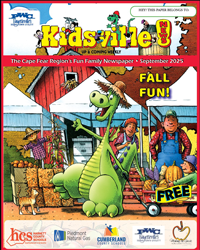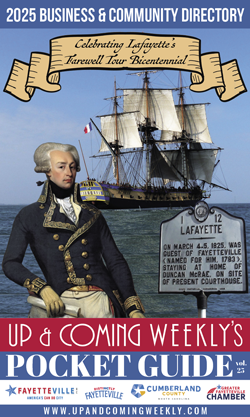 In the midst of the digital revolution, artist Leslie Pearson creates works of art to engage our imagination, memory, and connection with the natural world around us. Through her work, the artist is able to effortlessly move us towards a sensory experience of lost and found.
In the midst of the digital revolution, artist Leslie Pearson creates works of art to engage our imagination, memory, and connection with the natural world around us. Through her work, the artist is able to effortlessly move us towards a sensory experience of lost and found.
Gallery 208 in Fayetteville is eager to host the opening reception of Leslie Pearson: The Stillness of Time, July 25, between 5:30 p.m. and 7 p.m. A national and international multimedia artist, Pearson is known for her inventive use of natural materials in a variety of mediums: textiles, sculpture, paintings, book arts, installations and performance art.
Works in the exhibit were selected between the years 2012-2024 to share Pearsons’s choice of materials and development of style/content. The assemblage of sculptures and paintings are a tribute to an artist whose work continues to evoke curiosity and contemplation: dialogues between nature and storytelling, life and decay, the past and present, something broken and reconciliation.
It’s hard to look away from a sculpture in the exhibit titled Nesting. A bird’s nest and three speckled bird eggs have been placed inside the shell of an antique wooden wall clock. The interior space of the wooden form surrounds the nest, protecting the speckled eggs. The patinaed brass timekeeping mechanism is still mounted on the back wall of the clock above the nest. The visual discourse begins.
The mechanical mechanism on the back wall of the clock reminds us of the human-created concept of time, while the nest and eggs allude to the potential for growth and life in nature.
Nesting is one of five clock assemblages in the exhibition and an example of the continuity in all of Pearson’s works. We experience the muted colors in nature and plants, discover or uncover discarded objects, parts of objects, mementos, or weathered words across torn pieces of yellowed paper.
Pearson addressed the discarded objects and parts in her work by sharing: “Eventually these disparate parts begin to speak to each other and are formed into something new. I asked myself about the notion of time - how one defines and articulates time, the length of one’s days in this life and what is left behind as remembrances. On a personal level, I long for a slower pace - I look for opportunities to be still, to reflect and to have room to breathe in a world that is moving so fast it seems almost impossible to slow down.”
Because the subject(s) in Pearson’s work are so direct, recognizable, and tactile, it is easy to miss two important subtle qualities that influence the aesthetic experience of stillness in her works.
First, no matter what the medium, there is always a sense of something embedded. In the clock series, the found objects are surrounded by hand-carved wood, sometimes objects are placed behind glass - objects are carefully embedded or fixed, a permanent still life.
Bodies of work, like the clock series, always begin with an artist’s response to materials. Pearson stated: “I was lucky enough to come across a collection of old clock parts at an estate sale. I was instantly attracted to them as objects and could see how they could be reimagined as shrines, reliquaries, and other assemblages. As I began working on these pieces, I was thinking about them as time capsules and the things inside as mementos or a collection of memories. I’m always picking up odds and ends - things I find in nature and sometimes things other people might think of as trash (scraps of paper, buttons, bottle caps).”
The paintings in the exhibit reveal the second subtle quality that influences the overall aesthetic experience of stillness - the ways in which Pearson uses negative space. Elephant Ears, 2021, an 18” x 24” painting, is an eco-print on fabric. Pearson then paints over the fabric with an encaustic medium (hot beeswax and damar resin) on a rigid panel.
The process of eco-printing and the muted text on the fabric are the first stages of the final aesthetic embedding process. The hot encaustic wax painted on the fabric creates a unique hardened mist when it cools. The leaves seem suspended in the medium, nature is embedded.
According to Pearson, “Plants, leaves and flowers leave their shapes, colors and other marks on paper. Usually, the plant material is bundled in layers of paper, soaked in mordants and modifiers, then steamed to release the dye found naturally inside the plant. This creates a contact print in the shape of the leaf or the flower. The works in the exhibit are on fabric, layers of encaustic medium are added.”
The painting Elephant Ears is symmetrically balanced, two leaves of the elephant ear plant appear delicate in earthy tones of brown, green, and yellow. Each leaf leans away from the center line of the composition. Almost as if standing, both leaves are embedded just beneath the surface of the waxy encaustic layer. Crowded into the picture plane, the center negative space shape reinforces the movement of the leaves away from center, the center shape brings breath to the stillness.
Seeing the way Pearson has used the central negative space shape in Elephant Ears, I am reminded of her quote about herself as an artist: “I look for opportunities to be still, to reflect and to have room to breathe in a world that is moving so fast it seems almost impossible to slow down.”
Pearson has participated in many installations of her work, the largest interfacing with physical space was a 50-mile performance work through the Australian countryside in 2018 in a project called “Walking the Land.”
Pearson was selected, in collaboration with Australian artist Kerrie Bedson, to create Canoe, the lead ephemeral processional sculpture of the Mountain to Mouth Extreme Arts Walk in the “Mountain to Mouth” event that takes place every two years in Australia. The project/event included creating a sculpture, using all-natural materials, and then ceremoniously carried from the top of the You Yangs Mountains to the mouth of the Barwon River.
Pearson shared the experience: “The sculpture titled Canoe was built out of cane, bamboo, paper, and hog intestines and carried 50 miles through the Australian countryside, with ceremonies held along the way to mark its passage. Thousands of people participated, everything was about the earth and being mindful of how we’re connected to the land and what our effect is on the land. At the end of the journey, the sculpture is set afire.”
In 2022, Pearson was invited to revisit her roots of growing up in Popular Buff, Missouri and asked to install an exhibit at the Margaret Harwell Art Museum. Significant influences on Pearson’s creative works and career are where she grew up as a child, her education and professional experiences.
Raised in a rural town in Missouri, a simple country life included gardening and regularly being outdoors with her father. After earning a bachelor’s degree in fine art from Southeast Missouri State University in 1998, she was heavily involved in community arts programming as the Assistant Director of the Arts Council of Southeast Missouri and co-curator of Gallery 100 and the Lorimier Gallery in Cape Girardeau, Missouri.
In 2000, she earned a master’s degree in museum studies at Newcastle University in England and completed an internship at the Northern Gallery for Contemporary Art in Sunderland, United Kingdom. In 2011, Pearson earned an MFA in Textile Design at East Carolina University’s School of Art and Design in
Greenville, North Carolina.
It was the beginning of her graduate work in 2009 that became a pivotal influence on the direction of her work, when she learned her grandmother was dying. This event initiated the artist’s search, the “search for an authentic place within my work. After years of trying to distance myself, the catalyst was to reconnect with my past. As a result, I began accumulating ideas and stories, writings and oral histories from my grandmother and family members.”
While visiting Leslie Pearson: The Stillness of Time, if we allow ourselves to be open to the physicality of the finished works, we are experiencing what Pearson experiences in the process of making. We can imagine ourselves in a studio filled with objects, innumerable parts, scraps of paper, layers and layers of sorting taking place.
In some ways we are connected to what inspires and preoccupies the artist: “I am interested in layers of history in the form of handwritten letters, journals, old books, rusty metal, postage stamps, buttons, teeth, animal bones, or bits of fabric…my studio is filled with objects I've collected or unearthed…a scavenger for the lost or forgotten things that have interesting textures, colors, and surfaces. I like to imagine the stories that these treasures hold. I'm inspired by organic forms found within the natural world such as pods, seeds, nests, eggs, and shells - mostly for the metaphor they hold as keepers, protectors, and incubators.”
Leslie Pearson: The Stillness of Time will remain open to the public until October 17. Gallery 208 is located at 208 Rowan Street in Fayetteville. Hours are Monday through Thursday 9 a.m. to 4 p.m. Plenty of parking in the
back of the building.
For information about the exhibit call the gallery, 910-484-6200. To learn more about the artist, visit Leslie Pearsons’ website at https://www.lesliekpearson.com/
(Top Photo: Dog Rose by Leslie Pearson. Bottom Photo: Nesting by Leslie Pearson)

 How to resolve AdBlock issue?
How to resolve AdBlock issue? 









